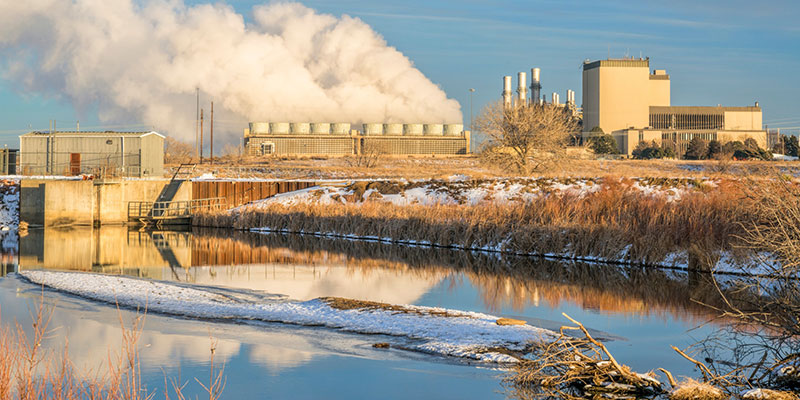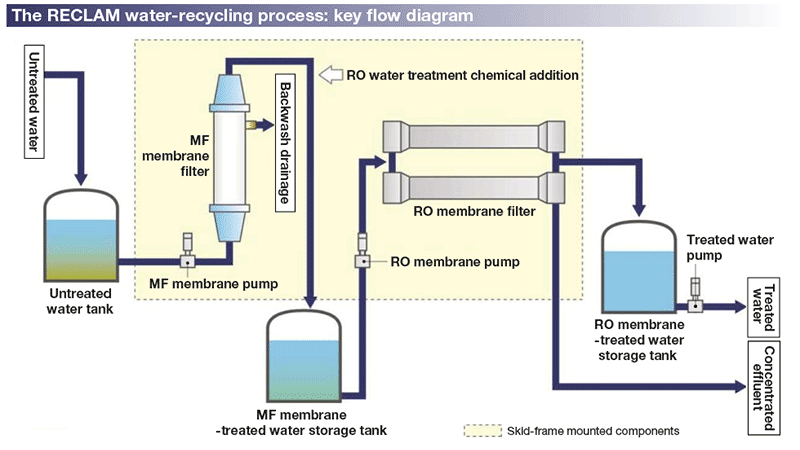Industrial Waste Water Treatment-- Cutting-Edge Technologies for Water Filtration
Industrial Waste Water Treatment-- Cutting-Edge Technologies for Water Filtration
Blog Article
Key Techniques in Industrial Waste Water Therapy Procedures
The therapy of commercial wastewater is an important facet of environmental monitoring, entailing a variety of strategies made to mitigate the effect of impurities. From the essential physical approaches that separate solids to the innovative chemical and organic procedures that target particular toxins, each technique plays an essential function in attaining water quality criteria. Additionally, developments in technologies such as membrane layer filtration and progressed oxidation procedures supply ingenious solutions for improving therapy efficiency. Understanding exactly how these approaches adjoin and their implications for sustainability elevates essential questions about the future of wastewater administration in sector.
Physical Treatment Approaches
How efficiently can physical treatment methods resolve the intricacies of commercial wastewater? Physical therapy approaches play a critical function in the initial stages of wastewater administration, focusing mostly on the elimination of solids and huge particulates. Methods such as filtration, flotation protection, and sedimentation are vital for decreasing the focus of put on hold solids, thus enhancing the efficiency of succeeding therapy procedures.
Sedimentation entails the gravitational settling of solids, allowing for the separation of larger materials from the wastewater. This technique is especially reliable in making clear water prior to biological or chemical treatments.
Furthermore, flotation protection approaches, which utilize air bubbles to raise suspended solids to the surface for elimination, work in treating wastewater with high focus of fats, oils, and oils. In general, physical treatment methods function as a vital initial step in the extensive administration of industrial wastewater, guaranteeing that the lots on subsequent therapy stages is lessened and enhancing general treatment efficacy.
Chemical Therapy Strategies
While physical treatment methods lay the groundwork for reliable wastewater administration, chemical treatment methods are essential for addressing the a lot more complex impurities typically found in commercial effluents. These techniques utilize different chemical representatives to precipitate, counteract, or oxidize damaging materials, guaranteeing an extra comprehensive elimination of pollutants.
One usual approach is coagulation and flocculation, where chemical coagulants such as light weight aluminum sulfate or ferric chloride are added to advertise the aggregation of suspended fragments. This process improves solid-liquid splitting up, lowering turbidity and boosting water top quality. In addition, neutralization procedures are utilized to change the pH of wastewater, utilizing bases or acids to reduce the effects of acidic or alkaline streams, specifically.
Oxidation-reduction responses play an important duty in derogatory organic pollutants and microorganisms. Chemical oxidants like chlorine, hydrogen, or ozone peroxide are made use of to break down complicated natural substances, making them much less harmful or a lot more eco-friendly. Furthermore, advanced oxidation processes (AOPs) combine several oxidation methods to boost toxin elimination efficiency.
Organic Therapy Processes
The efficiency of wastewater treatment is substantially improved by biological treatment procedures, which harness the natural metabolic activities of bacteria to break down organic issue and get rid of pollutants. Industrial Waste Water Treatment. These processes primarily include cardio and anaerobic food digestion, each tailored for particular kinds of wastewater
Aerobic treatment procedures use oxygen to sustain microbial development, advertising the failure of natural contaminants right into co2 and water. Typical techniques include turned on sludge systems, where aeration storage tanks help with the blending of wastewater with microbes, and dripping filters, which urge biofilm development on media surface areas.
Alternatively, anaerobic treatment procedures take place in the absence of oxygen, utilizing anaerobic bacteria to disintegrate organic issue, resulting in biogas manufacturing, a renewable energy resource. Anaerobic digesters are usually utilized in industrial setups for this purpose, properly decreasing the volume of sludge while producing useful biogas.
The option of a biological treatment approach depends upon wastewater features, therapy goals, and governing standards. The assimilation of biological procedures in wastewater treatment not just enhances contaminant elimination effectiveness yet likewise advertises sustainability by reducing chemical usage and supporting source recuperation.
Advanced Oxidation Processes

Common AOP methods include Fenton's reagent, ozonation, and photocatalysis. Fenton's reagent, a mix of hydrogen peroxide and ferrous iron, catalyzes the development of hydroxyl radicals, making it effective for treating wastewater including phenolic compounds and other stubborn substances. Ozonation makes use of ozone as a powerful oxidant, efficient in breaking down a variety of natural pollutants while concurrently disinfecting the effluent. Photocatalysis utilizes light-activated catalysts, such as titanium dioxide, to improve oxidation reactions and remove contaminants. look at this web-site
AOPs offer several benefits, consisting of lowered sludge production and the capacity to deal with wastewater with high concentrations of organic contaminants. The application of AOPs needs cautious factor to consider of functional specifications and cost-effectiveness, ensuring that these advanced techniques are appropriately integrated into existing wastewater treatment systems.
Membrane Layer Filtering Technologies

Microfiltration is reliable for removing suspended microorganisms and solids, while ultrafiltration targets smaller sized organic molecules and viruses. Nanofiltration bridges the space in between see it here ultrafiltration and turn around osmosis, effectively removing divalent ions and organic compounds. Reverse osmosis gives the highest level of filtration, utilized mostly for desalination and eliminating mono-valent ions.
Membrane layer modern technologies supply many advantages, including reduced power intake contrasted to conventional treatment methods, modular design for scalability, and the potential for water recovery and reuse. Challenges such as membrane fouling and the requirement for regular maintenance must be addressed to ensure system efficiency. On the whole, membrane purification modern technologies stand for an important component of modern commercial wastewater therapy techniques, promoting sustainability and source preservation in water management.
Conclusion
In final thought, industrial wastewater treatment uses a varied variety of techniques, including physical, chemical, biological, and advanced techniques. Continued innovations in these approaches will certainly better enhance the performance and effectiveness of wastewater therapy procedures in industrial settings.
The therapy of commercial wastewater is a vital facet of environmental administration, entailing an array of methods made to minimize the effect of pollutants.Just how successfully can physical therapy approaches deal with the intricacies of commercial Visit This Link wastewater?Advanced oxidation procedures (AOPs) stand for a sophisticated method in industrial wastewater treatment, created to effectively break down natural toxins that are usually resistant to standard therapy techniques (Industrial Waste Water Treatment).In verdict, commercial wastewater therapy utilizes a varied selection of techniques, including physical, chemical, biological, and advanced methods. Continued improvements in these techniques will certainly additionally boost the performance and effectiveness of wastewater therapy procedures in commercial setups
Report this page